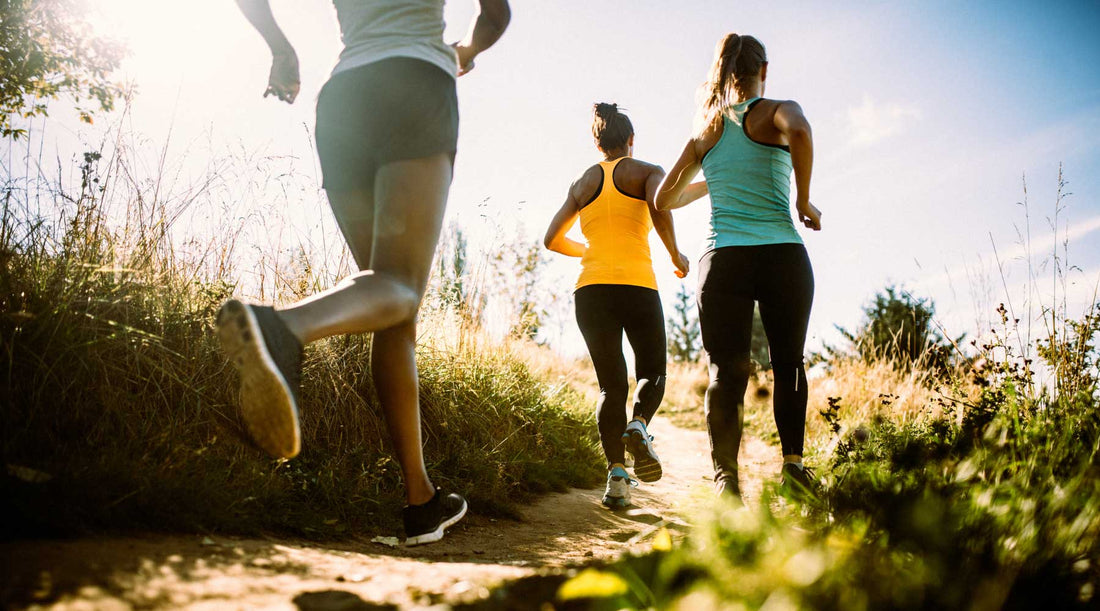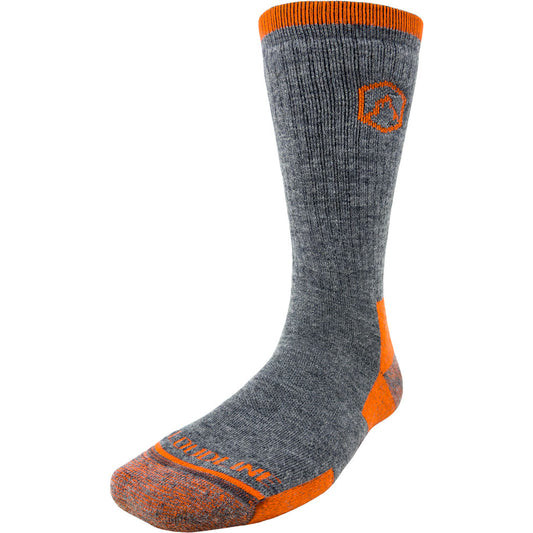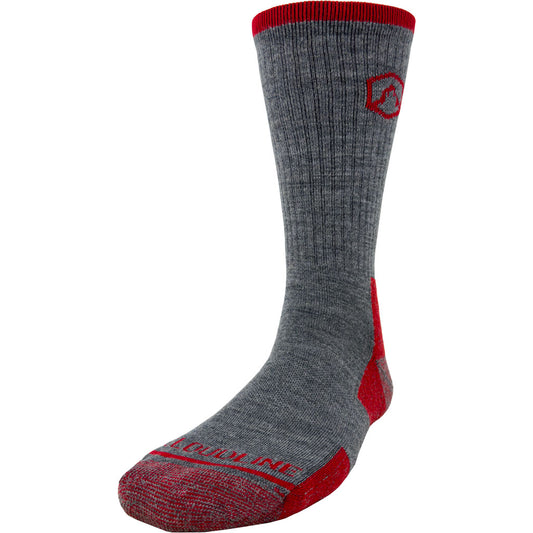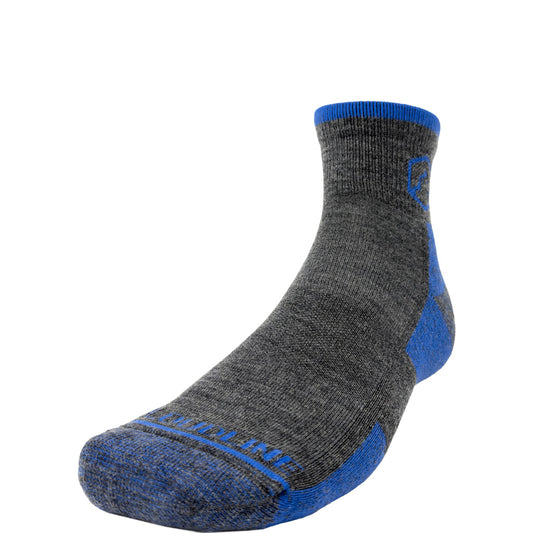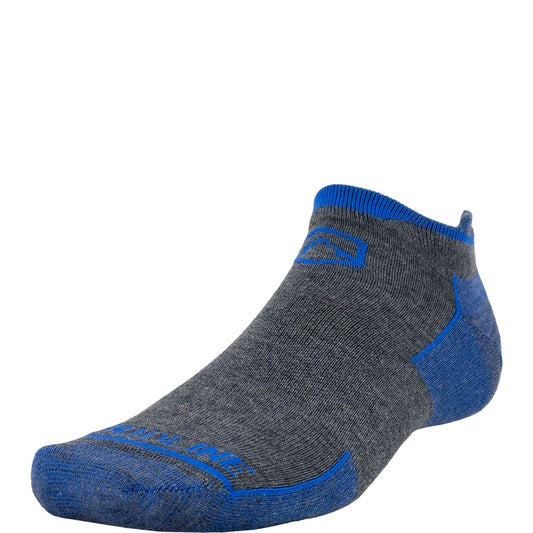Looking for a new activity to get you outside as the weather warms up? Need something different to spice up your typical workouts? Want to feel like a kid again?
Enter trail running. The sport has gained a lot of popularity in recent years, with races, clubs, and festivals popping up all over the country.
Trail running can be as simple as jogging down unpaved park paths or as technical as scrambling through rocky terrain. Whatever your goals are, here are the basics you need to get started with trail running.
Benefits of Trail Running

The benefits of trail running are plentiful. Think about it; the activity combines great physical exercise with all the goodness of spending time in nature. If you’re curious but not quite sold, here are some of the top benefits of trail running:
- Strength: You’ll rely on more muscle groups to balance while navigating rocks, roots, and uneven trails.
- Improved cardiovascular health: Like road running, trail running gets your blood pumping and strengthens your heart.
- Less impact: Running on a dirt trail is easier on your joints than pavement.
- Accessibility: All you need is a good pair of trail shoes and a trail to run on.
- Time in nature: By now the science is clear — spending time in nature is good for our mental health and happiness.
- Meeting like-minded people: Like many outdoor pursuits, trail running is a great way to meet people who share your interests.
- Fun: Sometimes the road gets boring, and a new trail can give you the excitement you need to find a little joy on your run.
Ready to lace up and go? Below we dive into the minimal gear that you’ll want to consider before heading out to the trail.
What You Need to Start Trail Running

One of the best things about trail running is how little gear you need to get started. Granted, the most important piece of gear — trail shoes — doesn’t come cheap. But a good pair of shoes will make all the difference, and it’s a relatively small price to pay for the joy of trail running.
Along with shoes, you’ll need food, water, and a way to carry your essentials.
Trail-Running Shoes
While road-running shoes can work in a pinch — especially on flat, gravel paths in your local park, for example — trail running shoes are advantageous. They differ from road-running shoes in important ways and will make your run safer and more comfortable.
Trail runners differ from road-running shoes in two main areas: the sole (including the midsole and outsole) and the uppers.
While road shoes tend to be flexible, trail running shoes are stiffer to protect your foot from obstacles on the trail, like rocks and sticks. Trail running shoes also have bigger lugs, made from soft rubber, to claw into gravel and dirt and grip wet and muddy surfaces. You won’t find these big lugs on road shoes, though — the soft rubber wears down quickly on paved routes.
The uppers of trail-running shoes are a little different from your road runners, too. While your road-running shoes likely have lightweight, breathable uppers, trail shoes are built to sustain a more rugged environment. This means they might have reinforcements in areas that see a lot of wear (like the heel and toe), making them a little heavier — and more durable — than road shoes. Some trail shoes are also waterproof and won’t be as breathable. Choose a good pair of merino wool running socks to ensure your feet will be able to breathe.
Trail shoes come in a variety of categories from “light” to “rugged.” Basically, the more rugged the trails you run, the more rugged your shoes should be. There are also all sorts of options when it comes to waterproofing, cushioning, and drop. Choose what feels good, and get expert advice if you’re unsure.
Hydration and Food

When running any distance, hydration and nutrition are key.
Like with your shoe choice, the most practical hydration and food-carrying system depends on your goals and personal preferences.
First, decide if you need to carry food. For a shorter run, you might not need to — but as you increase your distance, you’ll want some snacks.
If you’re only carrying water, handheld bottles are a simple option. Designed to feel comfortable in your hand, they allow you to drink without taking a break. These are great if you have the opportunity to refill along the way since they can’t hold a ton of water. Handheld water bottles aren’t a great idea on trails that require any scrambling because your hands will be full.
Hydration belts are popular for distance runners and can hold multiple bottles — as well as compact snacks — in a slim, low-profile belt. They’re an excellent option if you are going a moderate distance without resupply, or on a long run with a chance to refill. Not everyone finds a running belt comfortable — if you’re one of those people, there’s still one more option.
Running hydration vests allow you to carry more water, more food, and even extras like layers, a mini first aid kit, your phone, keys, and a headlamp. This is the best option if you’re going on longer trail runs without the opportunity to resupply or if you don’t like wearing a hydration belt. In addition to carrying multiple water bottles, some vests have a sleeve for a hydration reservoir.
Extra Gear

As we mentioned before, part of the beauty of trail running is that you don’t need much in terms of gear. But it’s helpful to know what clothes, tools, and gadgets you might want for certain situations.
- Clothing and layers: Wear sweat-wicking fabrics like merino wool year-round to help regulate your temperature. Depending on the season, you might want an extra layer that you can add and remove as necessary. When it’s colder out, gloves, a warm hat, and a buff are a good idea.
- Sun protection: If you’re on an exposed trail or spending several hours on a run, sun protection is crucial. Wear or bring a hat, a buff, sunglasses, and sunscreen to protect your skin and eyes.
- Headlamp: If you start your run early or stay out after dark (or if there’s any chance of this happening!), bring a headlamp to light your way.
- Navigation: Know where you’re going if you’re heading out on an unfamiliar trail. Download a map, use a GPS, or stash a paper map in your vest.
- Mini First Aid kit: Emergency medications, like an inhaler or epipen, are critical. Depending on where and how long you’re running, consider bringing bandaids, blister care items, gauze, tape, medications, water purifications tablets, and anything else you think you might need.
Trail Running Technique

Running isn’t rocket science, which is one of the reasons we love it. Trail running calls for a little bit of technique to keep you safe from falls and injury, but these tips are simple to practice, and you’ll get the hang of them quickly.
Shorten Your Stride
The first adjustment to make is to shorten your stride. Practice taking shorter, quicker strides when running on the trail. Shortening your stride will allow you to respond more quickly to obstacles like roots, rocks, and sticks.
Keep Your Gaze Ahead
Next, keep your gaze on the ground ahead of you. Though it can be tempting to look right at your feet, doing so could land you face-first into the trail. Practice looking ahead — about 10-15 feet in front of you — so you can see the oncoming obstacles and adjust your stride before it’s too late.
Use Your Arms
Lastly, keep your arms moving perpendicularly to your torso to keep up your momentum. On downhill or technical sections, put your elbows or arms out to help with balance.
It’s Okay to Walk
Truly, no one is going to call you out if you need to walk for a bit. Trail running can get intense — steep hills, mountain passes, and creek crossings are all possibilities. On longer runs, uphills, and downhills, a little bit of walking might give you the boost you need to pick up your speed again.
Give Trail Running a Try
Lace up your shoes and head to a local trail this weekend. You might find a sense of freedom and joy you’ve been looking for as you dash through the woods. Or, you might just find it’s a pleasant alternative to your usual road-running route. Regardless, you’ll enjoy a good workout and some fresh air.
What do you love about trail running? Let us know in the comments below, and tag us in your trailside photos with #cloudlinesocks.

